Best practice for managing meds

How to keep your loved one safe? It comes down to staying organized, planning ahead, and knowing where to go for the best guidance.
At the pharmacy: Be a loyal shopper.
Getting all of your loved one's prescriptions filled at the same pharmacy will help keep them safer, because it makes it easy for the person filling the prescriptions to check for drug interactions. Most pharmacists will do this automatically anytime they have a new patient or a new drug gets added to the mix, says Jean Kutner, MD, an internist, geriatrician, and chief medical officer at the University of Colorado Hospital. But it never hurts to remind them.
At the doctor's office: Brown bag it.
The next time you take your loved one to their primary care doctor or to a consult with a geriatric expert, bring in every single medication (prescription and OTC) and supplement they use. "Brown bag it," says Christine Kistler, MD, an assistant professor at UNC School of Medicine who serves on the American Geriatrics Society Research Committee. "I want to see everything."
In some cases, as with injectables, the doctor might ask for a demo to make sure the meds are being used properly.
"I had a patient in her 90s who had diabetes and vision impairment. Her blood sugar wasn't being well-controlled despite having an insulin pen, so I said, 'Show me how you use it,'" says Kistler. "She knew to take the cap off, but she couldn't see the tiny, clear plastic nubbin over the needle that had to be pulled off before use. She wasn't actually getting any insulin!"
After a hospital stay: Double check everything.
If your loved one was just in the hospital, it's time to do another "brown bag inventory" of medications, so ask a pharmacist or doctor to take a look.
"Have them reconcile the pills already at home with whatever you were given at the time of discharge," says Kutner. "It's not infrequent that someone gets sent home with a bunch of medications and starts taking them on top of what they have at home. And they end up taking three blood pressure medications because those purple and green pills are really the same thing."
At home: Put systems in place.
A pill box with slots reminding you about what to take in the morning, afternoon and evening is a simple yet effective tool for most people. But when a medication regimen is especially confusing or a patient has some cognitive impairment, there are other options that can simplify it even further. Some companies, including PillPack, will presort your medications into personalized packets and deliver them monthly, says Kistler.
Each packet contains the exact combination of pills you need to take on a given day at a specific time so there's no guesswork required. For instance, all your morning packs might contain one blood pressure pill, one aspirin, and one blood sugar pill. You then open another packet at dinnertime (for medications you take with food) and a third one before bed, depending on the specific regimen.
If you're still struggling to keep everything straight, ask a doctor for a referral to a home health resources program. "A nurse will come into the home and help the caregiver set up a medication schedule, organize all the pill bottles, etc.," says Kutner. Medicare usually covers this type of consult, she adds.
- Day by Day
I'm also dealing with...
Community
Did you know that there are local agencies in every community to help you find the services you need?
Use the search feature, then input your zip code to find local help.
Two popular areas of need for caregivers:

